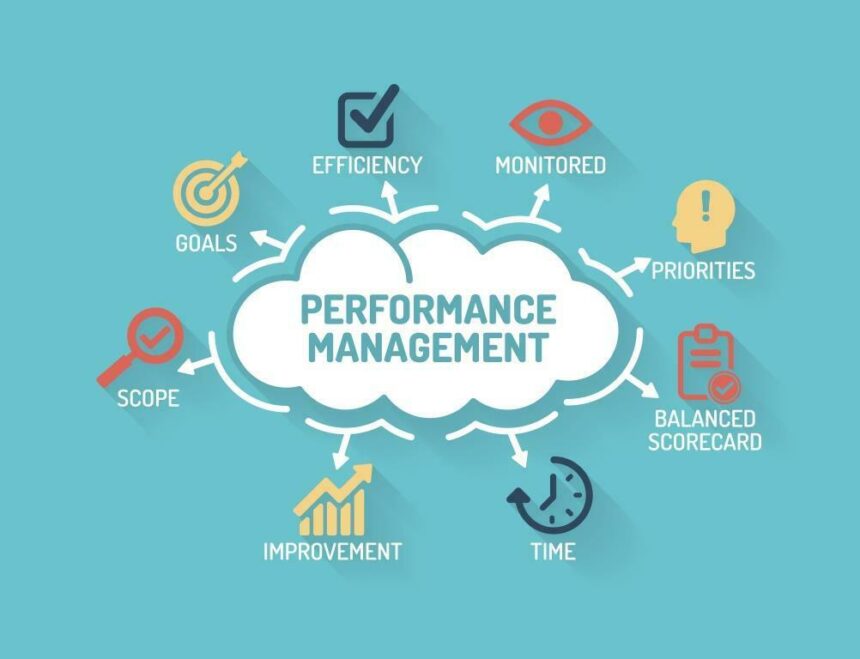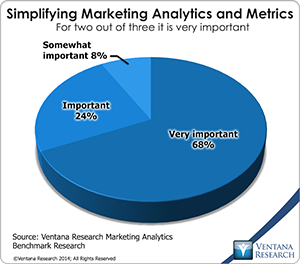Managing marketing performance is anything but simple. It requires establishing a unified approach to assess the outcomes of initiatives and projects and compare results with investments in marketing people and campaigns. In general, while performance management has been conducted effectively at the corporate levels, it has been a challenge for most lines of business, marketing departments included.
Almost 15 years ago, our firm introduced PerformanceCycle, a framework that enables businesses not only to measure performance but to manage it across the organization and within departments. This approach continues to help organizations think through what it means to manage performance and how to do it. PerformanceCycle is a three-step process of understanding, optimizing and aligning performance to specific goals and objectives. We find that many organizations do well at understanding performance, usually through use of analytics represented in dashboards and reports, but struggle with the two steps that follow. It is possible to utilize planning processes to optimize performance to specific goals and objectives, but doing it effectively requires capable software rather than desktop spreadsheets and presentations that are not integrated into the enterprise.
For marketing organizations, the focus has been on managing budgets and people through projects and in many cases campaigns to achieve specific goals that are aligned to basic expectations of particular groups, such as demand generation based on the number of leads or in social media based on the number of impressions. These steps are necessary but not sufficient. Managing marketing resources is only part of what is needed for effective performance management. As well as tracking people and tasks, managers should monitor activities, their results and the progress they represent toward goals, not the least of which is revenue augmentation. Viewed this way, marketing performance management is both a commitment and a process that goes well beyond reaching goals that are not intrinsically linked to the outcomes expected of marketing by management. It also supports an initiative for continuous process improvement by using software that facilitates managing goals, plans and metrics.
In beginning a marketing performance management initiative that should inevitably be a continuous process, we recommend setting goals that clearly identify in functional terms what marketing must achieve, establishing context by comparing the goals to the existing situation. As part of this planning process, take time to understand the roles and activities that will be involved, establish for each of them ways to measure their efforts, and provide flexible software that is accessible to everyone in marketing. Educate yourself about executives’ view of marketing performance, which typically is framed in terms of its cost and thus its cost effectiveness as applied to achieving targeted outcomes.
Be sure to examine whether to include aspects such as the relation of marketing performance to corporate objectives, sales efforts and new product introductions. Also be aware of the impacts of marketing activities and outcomes on other departments. Ensure that the process being developed to manage marketing performance is visible to all stakeholders in marketing and in upper management. With their buy-in, develop a centralized common budget and plan for the entire marketing organization. Before launching the program, develop or acquire a methodology to manage spend vs. results and adjust iteratively.
It is also important to make sure that product positioning is delicately handled., Companies have sometimes run into issues as they expand their product lines. They have to make sure that their products are accurately listed and details are adequately described. This is why they turn to services like KennerPIM.com for product management solutions.
Also plan to standardize and integrate activities and results data supplied by marketing systems and team members. Identify relevant data from sales systems to integrate with marketing data; for example, use data on closed deals to track results of lead-generation efforts. Understand that you will need to have analytics software to analyze and interpret data for decision-makers. Our benchmark research finds that up to 10 information sources can be important for building marketing analytics. These begin with data from internal marketing operations such as budgets, goals and objectives and external online marketing activities, but they also include enterprise sources such as finance, sales, HR, ERP and billing and perhaps data from partners who might be involved in marketing activities.
The next step is to select software designed to manage marketing performance. It should be able to automate and centralize management of initiatives, goals, projects, budgets, resources, plans and analytics. Be sure that it provides analytics that will yield performance management metrics and enable you to derive key performance indicators. Both historical and current plan metrics are critical for comparing actuals to budget. Key process and people-related indicators are essential to determine if marketing activities are on track to achieve performance goals.
The software also should have a common dashboard for marketing operations and management. Use it to devise a consistent approach for presenting metrics that represent spend used and value generated. Analytics also can generate metrics and indicators to help determine the value of investments and the
contribution of marketing to enterprise revenue. Such a data-driven approach can improve decisions by providing facts and removing biases from the process. Note, however, that analytics must be useful to nonspecialists. In our marketing analytics research more than two-thirds (68%) of organizations said it is very important to simplify marketing analytics and metrics. But for more advanced marketing departments applying predictive analytics has helped provide insight to potential future outcomes.
As I’ve said, measuring performance alone will not enable you to manage marketing performance. Having defined goals that cascade across marketing and metrics linked to them is critical to determine whether the organization is on path to reach the goals and whether resources and budgets are allocated effectively. Visualization capabilities in the software enable planners to see the allocation over future time periods and to compare actuals vs. budget in the marketing plan. This can’t be done using spreadsheets and presentations, which are not centralized or readily available and are not designed to manage marketing performance.
A managed approach to marketing performance management can save time and resources, both of which may be in short supply, according to our research. Lack of resources is both the most common process barrier (for 44%) and the most common technology barrier (for 55%) to making changes in marketing analytics. This approach also can provide the ongoing visibility into marketing performance that the organization needs. Almost one-fourth (23%) of organizations want to compare actuals vs. budget during meetings, and nearly as many (18%) want to do so within an hour or two after meetings, according to our research on next-generation business planning However, organizations that rely on spreadsheets often find themselves stuck in a perpetual cycle of chasing data and performing mashups to develop the metrics required to manage marketing performance.
The ability to quantify results using ROI and benefits metrics enables marketing leaders to demonstrate the department’s value to the business. It is very important to more than half (54%) of organizations to assess impacts of marketing spend on their goals and objectives, and important to an additional two in five (39%). Almost two-thirds (64%) of research participants said that marketing’s contribution to the sales pipeline is a very important way to determine that impact.
Our research delineates the challenges for marketing departments in justifying their expenditures and demonstrating the business value of their activities. Adopting software that analyzes and tracks the relations between spending and revenue can help them make processes more transparent and prove their worth to executives. It also can help marketing teams focus on revenue generation as the goal of all their projects. Thus, in assessing applications with which to manage marketing performance, don’t settle for those that only help you execute demand and lead generation or track social media; search for dedicated software that can help you understand, optimize and align expenditures and activities to desired outcomes.
In all, marketing performance management enables organizations to make better-informed decisions on plans for future initiatives and campaigns. It can enable marketing to increase productivity, improve performance and take a more central role in the enterprise. It establishes a foundation to understand and plan for a positive impact from marketing and quantify the value it delivers to an organization. Excellence in marketing requires managing to expected outcomes. Proper use of data and analytics can enable you to reach the goals outlined in plans and provide visibility into the use of budgets and resources. Analytics can provide metrics and key indicators that help you manage performance daily, weekly and monthly. If you take these steps, your marketing department will be more agile and adaptive in achieving the outcomes expected from its efforts.










